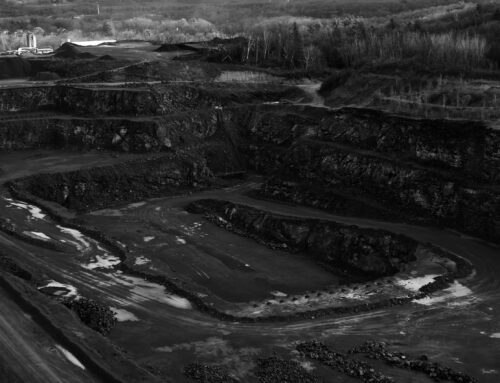
Aluminum, the silvery-white metal ubiquitous in modern life, is more than just a material; it’s a cornerstone of industries, a facilitator of technological advancement, and a crucial driver of economic development. From the cans we drink from to the aeroplanes we fly in, aluminium’s versatility and unique properties have cemented its place as an indispensable commodity. This blog post delves into the world of aluminium, exploring its journey from mine to market, its impact on the environment, and its significance in the global economy.
From Earth to Everyday Life: The Aluminum Mining and Production Process
Aluminum’s journey begins in the earth’s crust, where it exists primarily as bauxite, an ore containing hydrated aluminium oxides. Bauxite deposits are found in abundance across various regions globally, notably in Australia, Guinea, Brazil, Jamaica, and India. These countries are among the major players in the aluminium industry.
The mining process typically involves open-pit mining, where large areas of land are excavated to access the ore. This method, while efficient for large-scale extraction, can have significant environmental consequences, which we’ll discuss later.
Once the bauxite is extracted, it undergoes a refining process known as the Bayer process. This process involves dissolving the bauxite in a hot solution of caustic soda, separating the aluminium oxide from other impurities. The resulting aluminium hydroxide is then calcined (heated) to produce alumina (aluminium oxide).
The next crucial step is the smelting process, which transforms alumina into metallic aluminium. This is achieved through the Hall-Héroult process, an electrolytic process that involves dissolving alumina in a molten cryolite bath and passing a powerful electric current through it. The electric current causes the aluminium ions to be reduced to metallic aluminium, which then collects at the bottom of the electrolytic cell and is tapped off. This process is highly energy-intensive, requiring significant amounts of electricity.
Aluminum’s Diverse Applications: Fueling Industries Worldwide
Aluminum’s unique combination of properties – lightweight, corrosion-resistant, highly conductive, and easily recyclable – makes it a preferred material across a wide range of industries:
- Transportation: Aluminum’s lightweight nature makes it ideal for aircraft, automobiles, trains, and ships, contributing to fuel efficiency.
- Packaging: From beverage cans to food containers, aluminium’s recyclability and protective properties make it a popular packaging material.
- Construction: Aluminum is used in windows, doors, roofing, and structural components of buildings due to its durability and corrosion resistance.
- Electrical and Electronics: Aluminum’s excellent conductivity makes it suitable for power lines, electrical wiring, and electronic components.
- Aerospace: Aluminum alloys are critical in the aerospace industry due to their high strength-to-weight ratio.
- Other Applications: Aluminum finds uses in furniture, cookware, machinery, and various other consumer products.
The Global Aluminum Trade: Importers and Exporters
The aluminium market is a global network, with countries specializing in different stages of production and consumption. Some of the top aluminium importers include the United States, China, Japan, and Germany, while major exporters include Australia, Russia, Canada, and China. These trade flows are influenced by factors such as industrial demand, production costs, and government policies.
Aluminum and Economic Development: A Vital Link
Aluminium plays a crucial role in economic development. Its availability and affordability contribute to the growth of various industries, creating jobs and stimulating economic activity. The development of infrastructure, including transportation networks and buildings, relies heavily on aluminium. Furthermore, the aluminium industry itself provides employment opportunities in mining, refining, smelting, and manufacturing. Access to aluminium is thus a significant factor in a nation’s industrial progress and overall economic well-being.
Environmental Impacts: Balancing Progress with Sustainability
While aluminium is a valuable material, its production and use are associated with environmental impacts.
- Mining: Bauxite mining can lead to deforestation, soil erosion, habitat destruction, and water pollution.
- Smelting: The Hall-Héroult process is energy-intensive, and if the electricity is generated from fossil fuels, it can contribute to greenhouse gas emissions.
- Waste Generation: Aluminum production and manufacturing can generate waste materials that need proper disposal.
Addressing these environmental challenges is crucial for the sustainable development of the aluminium industry. Efforts are being made to improve mining practices, increase the use of renewable energy in smelting, and promot aluminiumum recycling.
The Aluminum Market: Pricing Dynamics and Influencing Factors
Aluminium prices fluctuate in global markets, influenced by a complex interplay of factors:
- Supply and Demand: Changes in global demand for aluminium, driven by economic growth or decline in key industries, directly impact prices. Similarly, disruptions in supply, such as mine closures or production cuts, can lead to price increases.
- Energy Costs: Sincaluminiumum smelting is energy-intensive; fluctuations in energy prices, particularly electricity costs, can significantly affect production costs and, consequently, aluminiumnum prices.
- Raw Material Prices: The cost of bauxite and other raw materials used in aluminium production influences the overall cost of production and affects market prices.
- Economic Conditions: Global economic conditions, including growth rates, inflation, and interest rates, can impact demand for aluminium and influence price movements.
- Geopolitical Factors: Political instability, trade disputes, and government regulations can disrupt supply chains and impact aluminium prices.
- Currency Exchange Rates: Fluctuations in currency exchange rates can affect the price of aluminium in different markets.
Technological Advancements and the Future of Aluminum
The aluminium industry is continuously evolving, with ongoing research and development focused on improving efficiency, reducing environmental impact, and enhancing the properties of aluminium.
- Advanced Smelting Technologies: Researchers are exploring new smelting technologies that require less energy and generate fewer emissions.
- Improved Recycling Technologies: Developing more efficient and cost-effective recycling methods is crucial for reducing the environmental footprint of aluminium production and conserving resources.
- Lightweight Alloys: Developing new aluminium alloys with enhanced strength and lightweight properties is crucial for applications in transportation and aerospace.
- Circular Economy: Promoting a circular economy approach, where aluminium products are designed for recyclability and materials are kept in use for as long as possible, is essential for sustainable development.
Geopolitical Influence on Aluminum Trade
Geopolitical factors significantly impact the aluminium trade. Trade agreements, tariffs, and sanctions can influence the flow of aluminium between countries. Political instability in key producing regions can disrupt supply chains and lead to price volatility. Furthermore, government regulations related to environmental standards and trade policies can affect the competitiveness of different aluminium producers.
Conclusion: Aluminum’s Enduring Importance
Aluminum’s versatility, abundance, and recyclability have made it an indispensable material in modern society. From transportation and packaging to construction and electronics, aluminium plays a critical role in various industries and contributes significantly to economic development. However, it’s crucial to acknowledge the environmental challenges associated with aluminium production and strive for sustainable practices. Through technological advancements, responsible mining practices, and a focus on recycling, the aluminium industry can continue to provide this vital material while minimizing its environmental impact. As the world continues to develop and innovate, aluminium will undoubtedly remain a crucial component of our material landscape.



